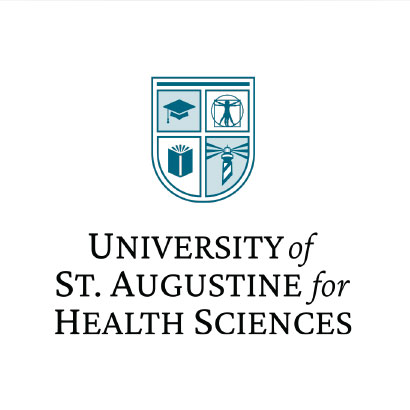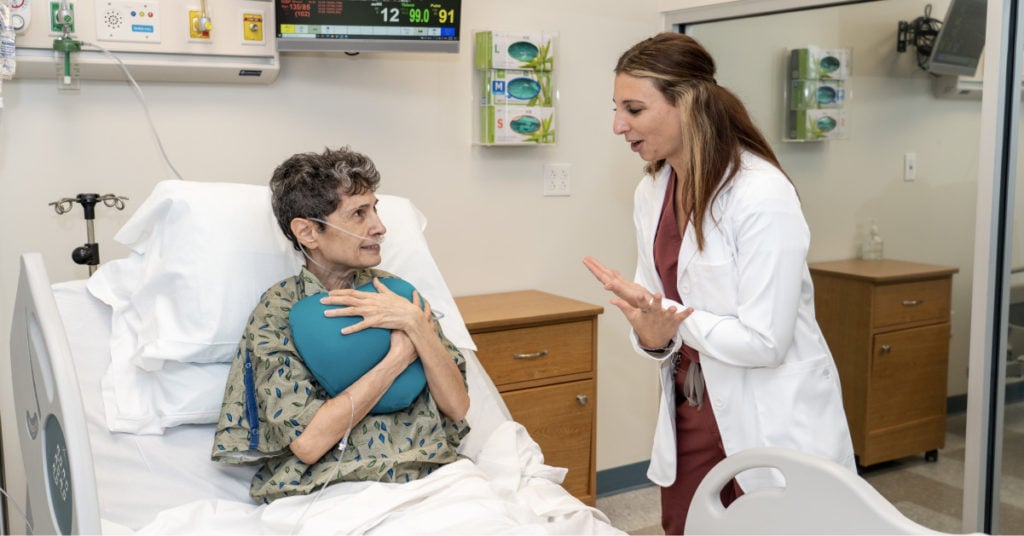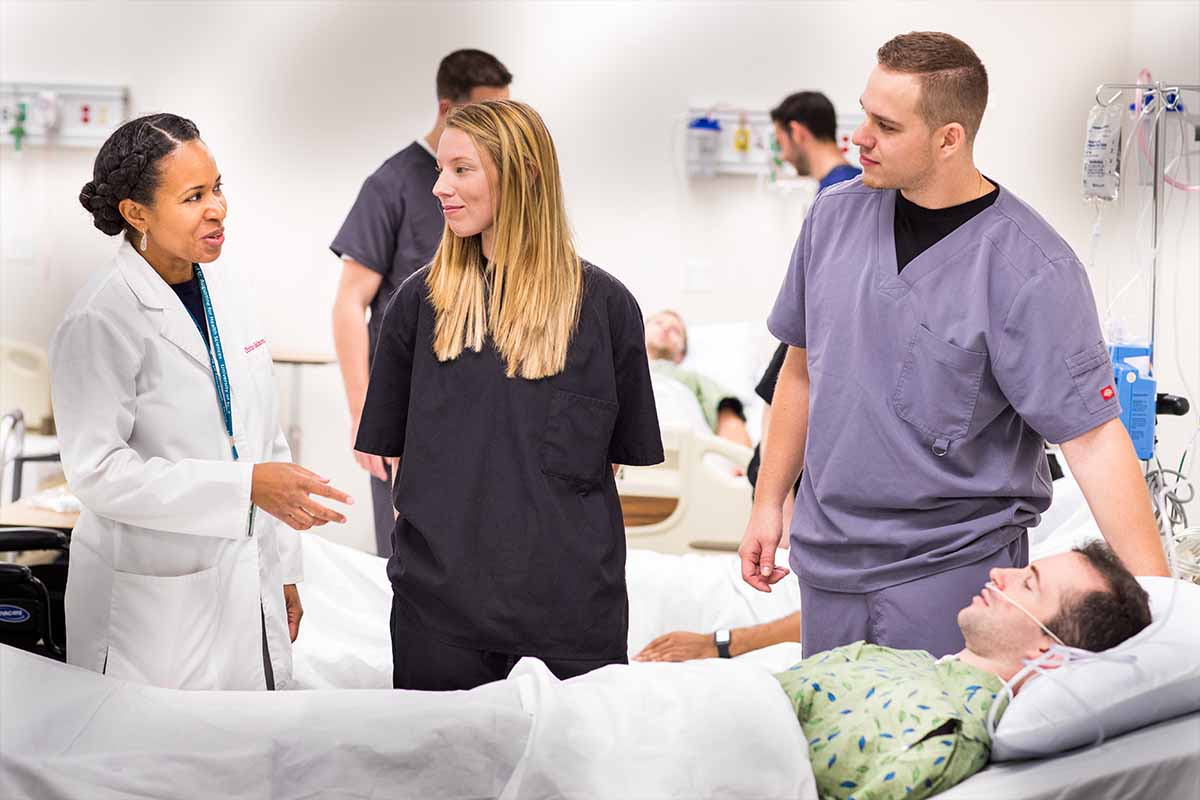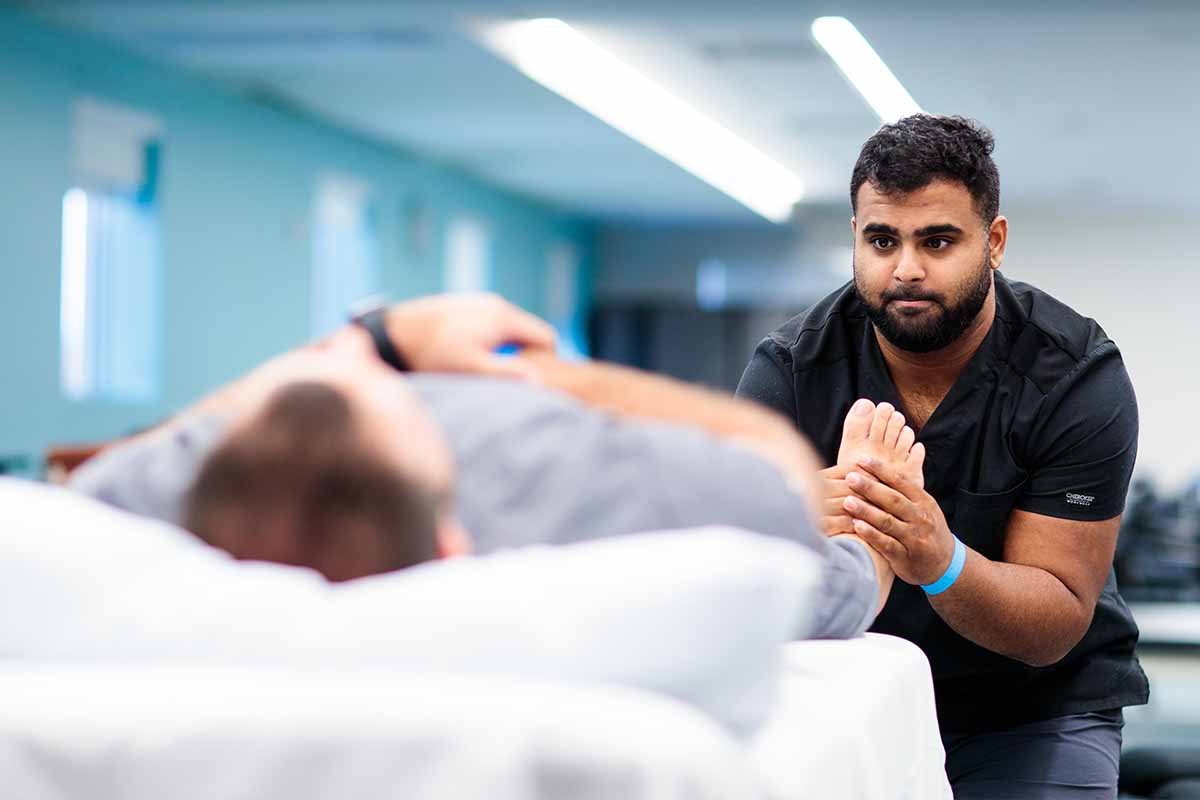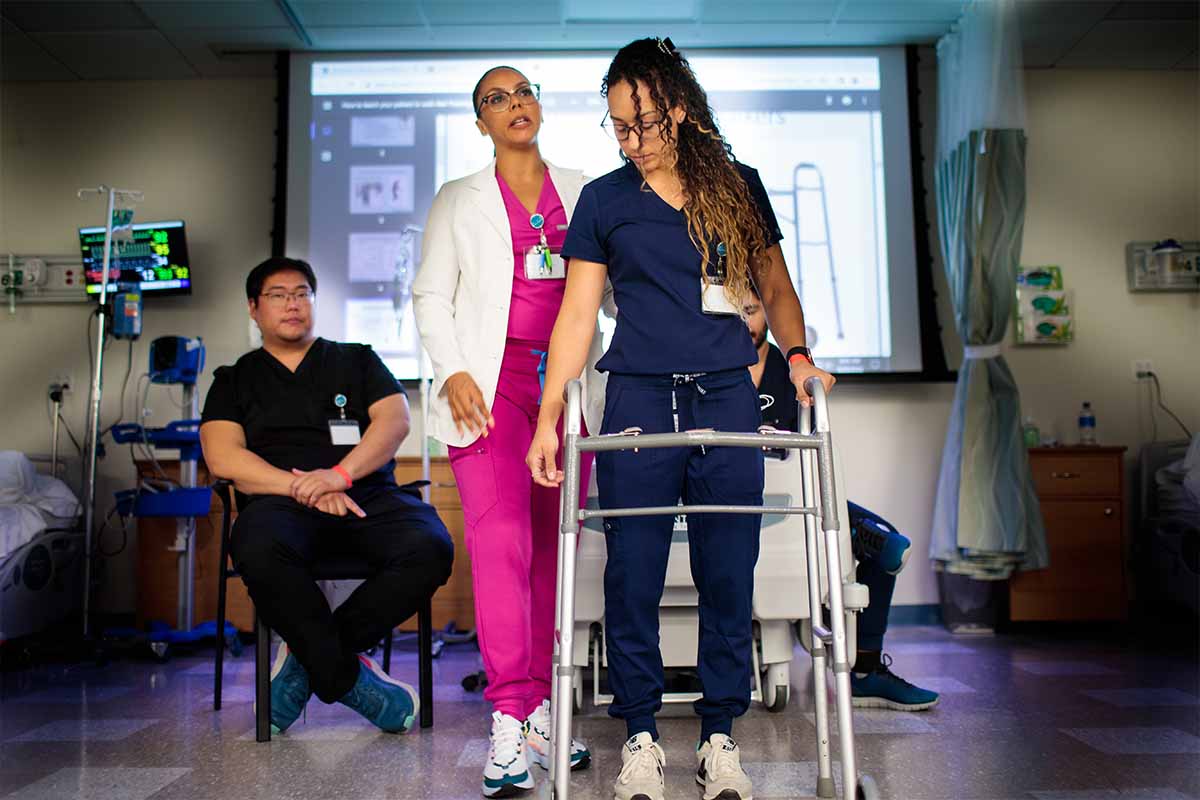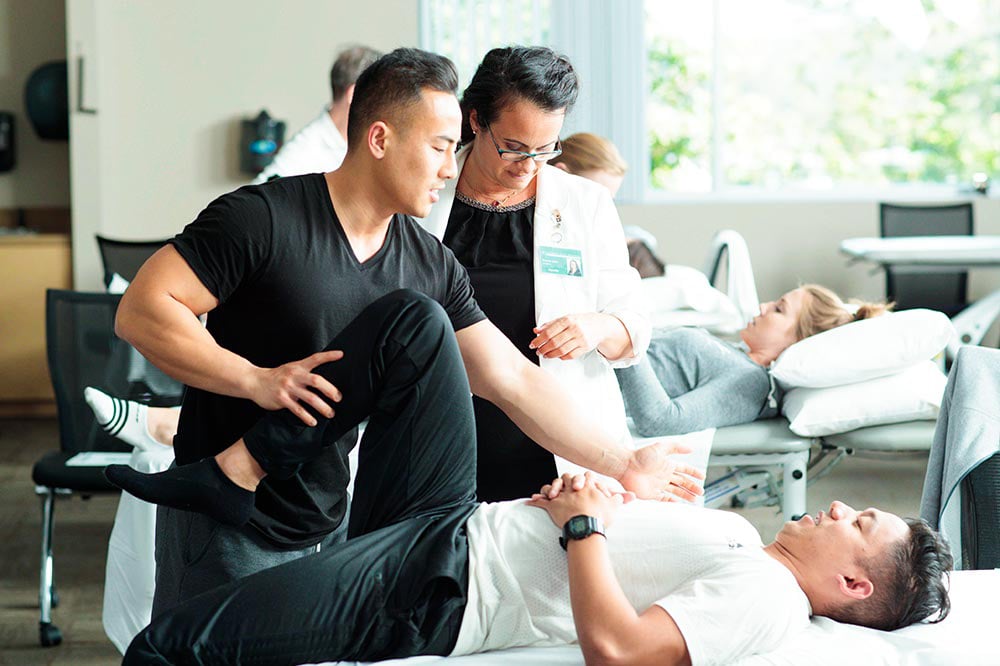

As a physical therapist (PT), you can choose to specialize in one or more areas throughout your professional career. Adding a specialty certification demonstrates your expertise in your area of passion, enhances your credentials, and opens doors to new job possibilities, some of which may even be virtual.
To specialize, you must first become a physical therapist and practice for at least 2,000 clock hours in your area of specialization. After that, you can apply for specialty certification from the American Physical Therapy Association (APTA) in one of several areas. In some cases, you must take classes or an exam; in others, proving your prior experience is all that is needed.
What Is a Physical Therapy Specialization?
According to the American Board of Physical Therapy Specialties (ABPTS), choosing to pursue a specialization helps physical therapists build on their broad base of professional education and experience to deepen their knowledge and skills related to a specialized area of practice.
More than 27,000 physical therapists in the United States are certified as specialists. Those who choose to have a more specialized physical therapy are able to hone their skills in one area of expertise and work toward becoming a mentor and leader in that area.
Board-Certification Eligibility Requirements
Each specialized physical therapy has its own criteria for obtaining certifications. However, the following requirements must be met by all candidates:
- Obtain licensure to practice physical therapy in the United States.
- Pay the application review fee of $525 for APTA members or $870 for non-APTA members.
- Submit a separate application for each specialist certification you wish to obtain.
- Pass the clinical specialty exam (exam fees are $810 for APTA members and $1,535 for non-members).
Physical Therapy Specialties
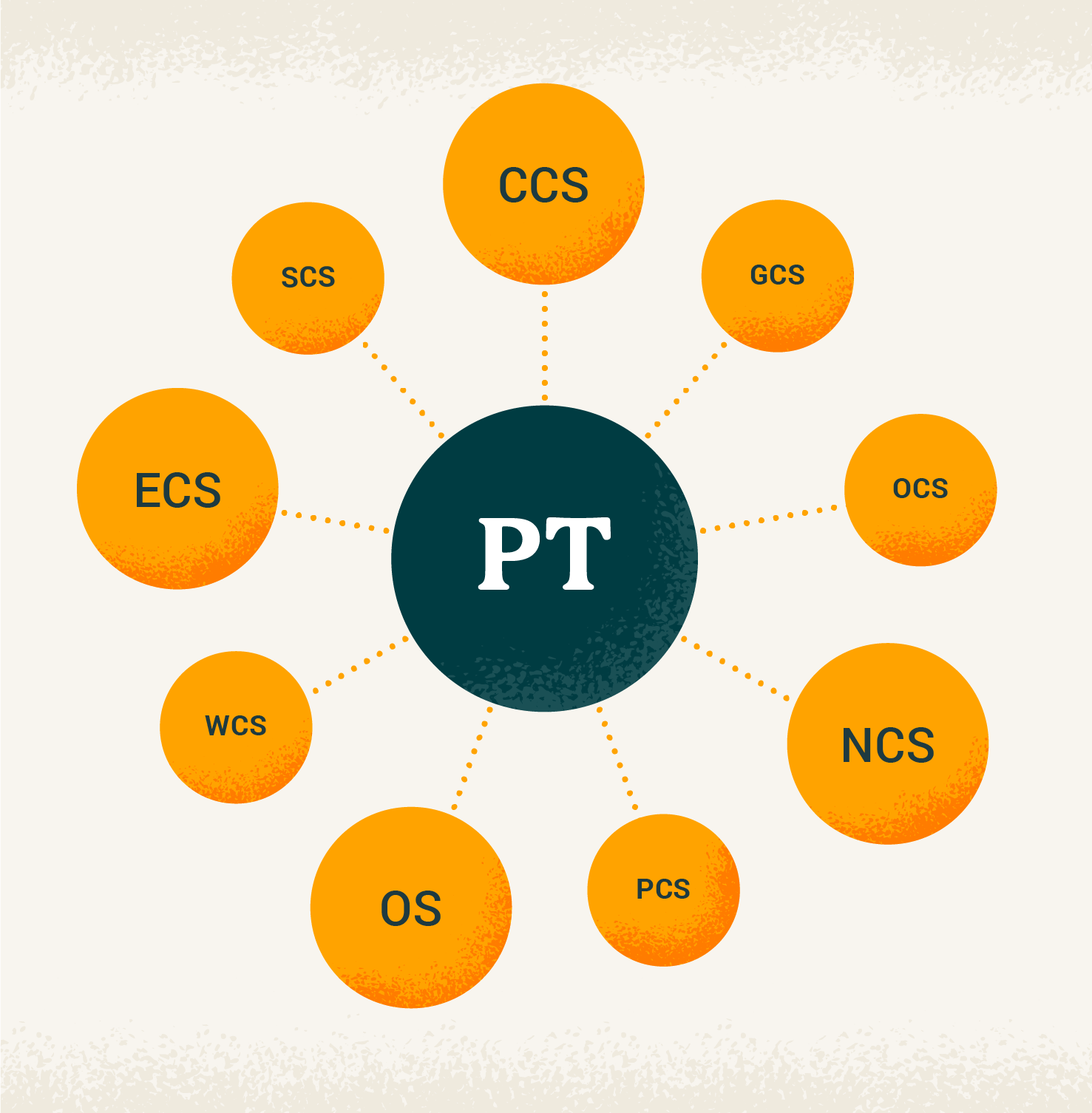

Currently, the American Board of Physical Therapy Specialties recognizes nine areas of specialty, with a tenth area becoming certifiable in 2022. Read on for a description of the ten physical therapy specialty areas.
Learn More About Our PT Programs
1. Cardiovascular & Pulmonary Clinical Specialist (CCS)
Established by APTA in 1981, the cardiovascular and pulmonary specialization was the first board-certified PT specialization. Cardiovascular and pulmonary specialists are equipped to help patients manage and heal from a variety of heart and lung conditions. For example, they help patients recover from heart attacks or open-heart surgery, and they can help patients manage respiratory diseases such as chronic obstructive pulmonary disease (COPD).
To become a cardiovascular and pulmonary specialist, applicants must meet the following requirements:
- Have current Advanced Cardiac Life Support (ACLS) certification by the American Heart Association.
- Applicants must submit evidence of participation in a clinical data analysis project directly related to the cardiovascular and pulmonary specialty area within the past ten years.
- Complete a prerequisite amount of patient care in this specialty, through either 2000 working hours or an APTA-accredited residency.
2. Geriatric Clinical Specialist (GCS)
With the aging U.S. population, specializing in geriatrics is becoming increasingly relevant. Physical therapists who specialize in geriatrics are experts in helping patients with musculoskeletal conditions like arthritis and osteoporosis, as well as progressive neurological diseases like Alzheimer’s and Parkinson’s.
To earn their specialization in geriatrics, applicants must meet the minimum APTA requirements, which are:
- 2000 hours of direct patient care in geriatrics within the past 10 years, or
- Successful completion of an APTA-accredited geriatrics residency within the past ten years
3. Orthopaedic Clinical Specialist (OCS)
Orthopaedics has historically been the most popular physical therapy specialty, with 15,596 certified specialists in the United States as of June 2019. Orthopaedic specialists treat injuries and adverse conditions of the bone, muscle, tendons, ligaments, and joints. They also see patients with musculoskeletal disorders such as arthritis or those recovering from surgery.
The requirements to become an orthopaedic specialist include:
- 2000 hours of direct patient care in orthopaedics within the past 10 years, or
- Successful completion of an APTA-accredited orthopaedic residency within the past ten years
4. Neurology Clinical Specialist (NCS)
PTs who pursue the in-demand specialty of neurology treat patients with various neurological disorders, injuries, and impairments. Neurology specialists typically work in clinical environments such as hospitals and rehabilitation centers.
Physical therapists looking to obtain a specialization in neurology must complete these patient care prerequisites:
- 2000 hours of direct patient care in neurology within the past 10 years, or
- Successful completion of an APTA-accredited neurology residency within the past ten years
5. Pediatric Clinical Specialist (PCS)
Pediatric specialists focus on treating physical conditions in young people from newborns to teenagers. Pediatric specialists commonly see patients with conditions such as cerebral palsy, autism, cystic fibrosis, and more.
The requirements to become a pediatric specialist include:
- 2000 hours of direct patient care in pediatrics within the past 10 years, or
- Successful completion of an APTA-accredited pediatrics residency within the past ten years
6. Oncology Specialist
Oncology specialists study the treatment of various types of cancer and typically work with patients who are undergoing treatment or recovering from cancer. PT specialists in oncology typically help patients manage and recover from conditions such as chronic pain, weakness, or loss of bone density.
Oncology specialists must complete these requirements to obtain certification for cancer care:
- 2000 hours of direct patient care in oncology within the past ten years, or
- Successful completion of an APTA-accredited oncology residency within the past ten years
7. Women’s Health Specialist (WCS)
A newer specialization in physical therapy, women’s health spans conditions affecting women of all ages, such as pregnancy and menopause. Physical therapy specialists often help pre- and postpartum women experiencing issues such as incontinence or low back pain like pelvic pain.
To become a women’s health specialist, applicants must fulfill certain requirements, including:
- 2000 hours of direct patient care in women’s health within the past 10 years, or
- Successful completion of an APTA-accredited women’s health residency within the past ten years
8. Electrophysiologic Clinical Specialist (ECS)
As one of the newest PT specializations, electrophysiologic clinical specialists treat conditions related to nerve and muscle damage caused by compromised skin integrity, or wounds.
The requirements to become an electrophysiologic clinical specialist are as follows:
- Submit a list of between one and three relevant individual learning experiences completed under the guidance of a licensed physical therapist within the past 10 years, along with a letter from the colleague providing oversight of that experience
- Submit actual patient reports completed within the past 3 years and testing log documentation of 500 of the most recent complete electroneuromyography examinations completed within the past 10 years.
- 2000 hours of direct patient care in electrophysiology within the past 10 years, or
- Successful completion of an APTA-accredited clinical electrophysiology residency within the past ten years
9. Sports Clinical Specialist (SCS)
Sports clinical specialists treat amateur and professional athletes like the Olympic athletes showing off the circular marks of cupping therapy in recent years, making this an exciting specialization to enter. As experts in injury management and rehabilitation, sports medicine specialists have a plethora of career options available, making it a great field to start your career in.
To become a sports clinical specialist, physical therapists must meet the minimum APTA requirements, which include:
- CPR certification via the American Heart Association’s BLS Healthcare Provider Course or the American Red Cross’s CPR for the Professional Rescuer course
- Become certified for Acute Management of Injury & Illness in sports medicine
- 2000 hours of direct patient care in sports within the past 10 years, including 100 hours in an athletic venue, or
- Successful completion of an APTA-accredited sports residency within the past ten years
10. Wound Management Specialist
Wound management is anticipated to become a board-certifiable specialty by 2022. Since the wound management specialty is still under development, the application requirements have not yet been set. According to the Academy of Clinical Electrophysiology and Wound Management, wound management specialists take a multidisciplinary focus, treating both superficial and deep wounds with emphasis on the relationships between body systems and how treating one system impacts another.
The largest PT school in the United States, the University of St. Augustine for Health Sciences (USAHS) offers a hands-on Doctor of Physical Therapy (DPT) degree. Practice with mock and real patients in our state-of-the-art simulation centers and learn anatomy with our high-tech tools. Prepare for clinical practice with a wide range of patients, as well as advanced roles in research, practice leadership, and policymaking. Residential and Flex (weekend-focused) pathways are available.
Sources:
ABPTS, “Specialist Certification”: http://www.abpts.org/Certification/
